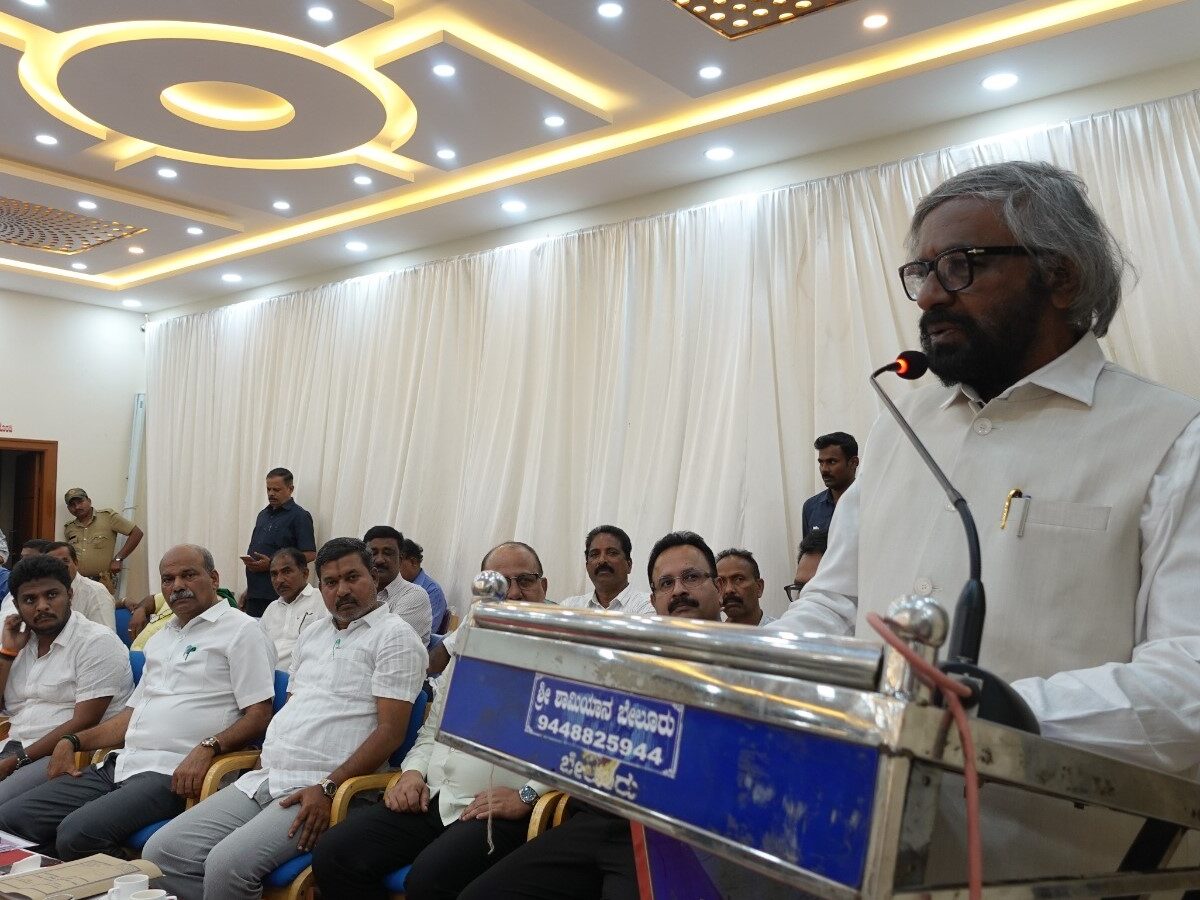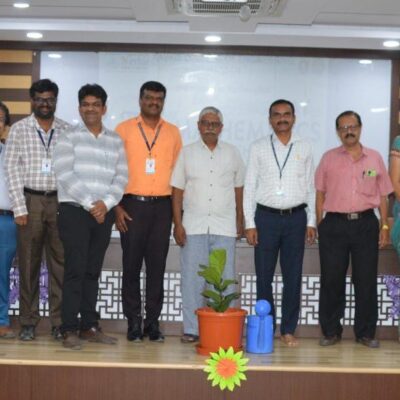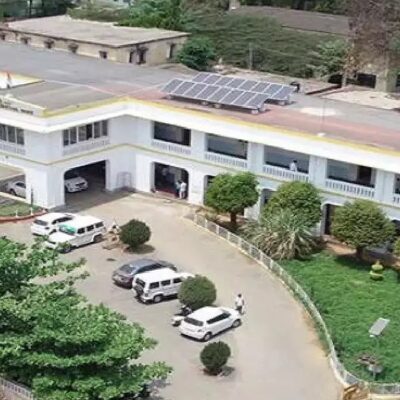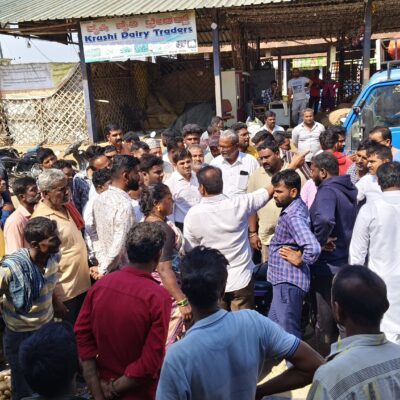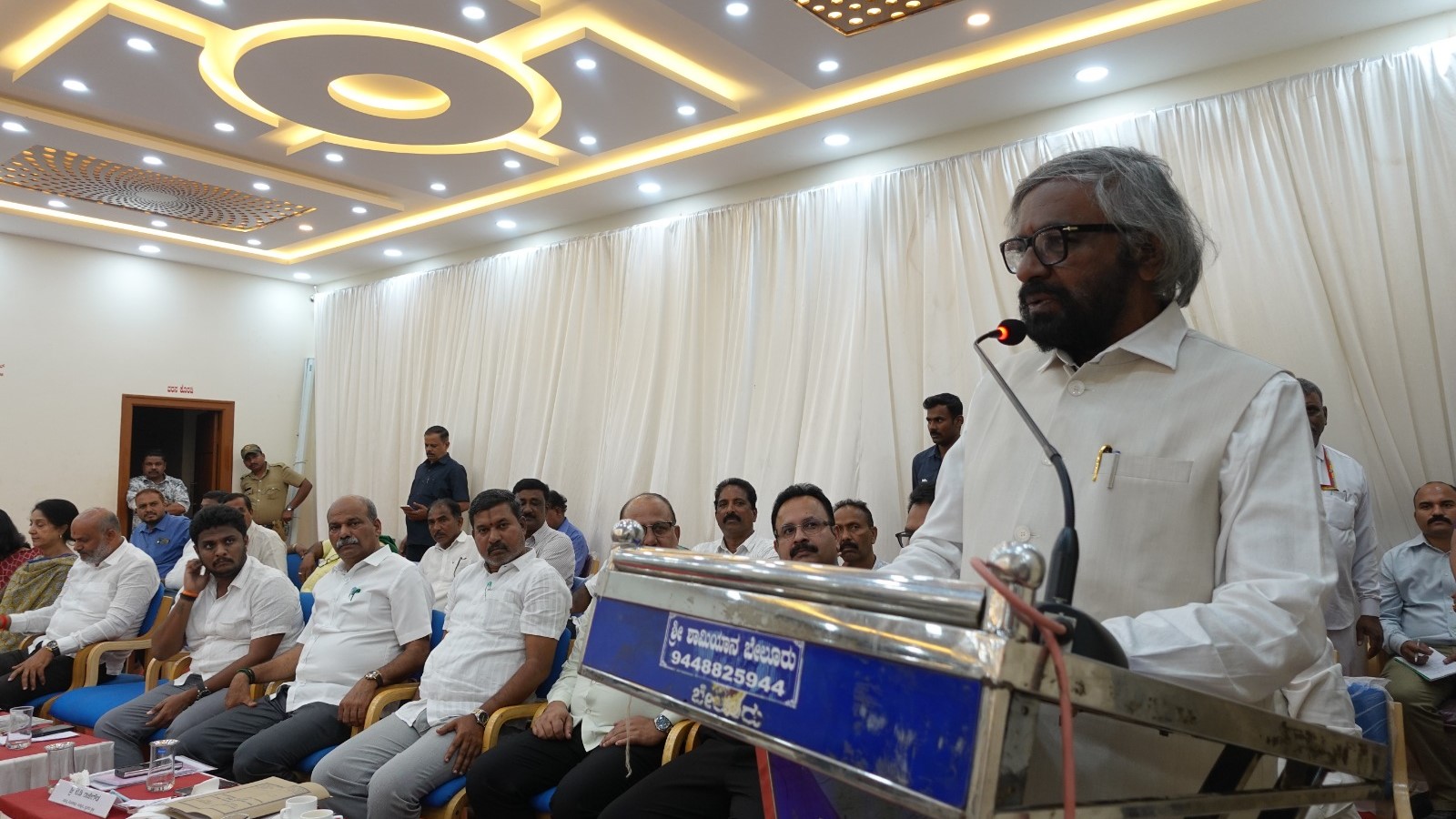
Hassan: “If 200 elephants living outside the forests of Kodagu, Hassan and Chikkamagaluru are captured and sent to the elephant sanctuary proposed to be established in the Bhadra sanctuary, the elephant problem of these three districts will be permanently solved,” said Forest, Biology and Environment Minister Eshwar B Khandre.
Speaking at the R.V. Kalyana Mantapa in Belur town recently while presiding over an open meeting of coffee growers, farmers and villagers of Hassan, Kodagu and Chikkamagaluru, where the elephant-human conflict is prevalent, he expressed confidence that the Chief Minister will announce the elephant sanctuary project in this year’s budget.
He said that inter-district coordination and efficient use of technology are necessary to prevent damage to human lives and farmers’ crops caused by wildlife, especially elephants.
“There is a demand for more compensation for those injured and disabled due to wildlife attacks, and this will be examined. Similarly, a system will be made to implement a method for quick compensation for crop damage,” he said.
“Today is World Wildlife Day, a day to create awareness about the conservation of wild animals. On the same day, this meeting is being held to discuss ways to protect the precious lives of humans from wildlife,” the Minister added.
Khandre said after the Wildlife Protection Act came into force, hunting has been banned.
“Wildlife is being protected. Due to this, the number of wildlife in the state has increased. But the forest area is not increasing accordingly. This has led to human-wildlife conflict,” he added.
The division of forest areas for various development projects including roads, water, and electricity is also said to be the reason for the increase in elephant-human conflict. A railway barricade is being built to control the damage to precious human lives by wild animals. In Hassan district, seven elephants have been fitted with radio collars in the last two years, he said.
“Generally, if a female elephant, which leads the group, is identified and fitted with a radio collar, it will be easier to monitor the movement of elephants. Radio collars have been developed domestically and steps have been taken to install more radio collars on the pachyderms,” he added.
On the occasion, a suggestion was made to create a WhatsApp group comprising district administration, panchayat officials and the people of related villages about the movement of elephants.
Khandre said that if people were alerted through this mechanism, the number of deaths can be prevented.
Note for study
It was also suggested that sterilization be carried out to control the elephant population in the region. In this regard, the Indian Institute of Science (IISC) has been given the responsibility of studying the measures taken to control the elephant population globally.
The Minister said that action would be taken as per the Supreme Court verdict and Wildlife Protection Act regulations after the study report comes.
In addition, he said there was an belief that if food and water were provided to elephants in the forest, they would not come to the countryside for nourishment.
In this context, instructions have been given to the officers to clear the Eucalyptus and Acacia trees in the forest in a phased manner and to grow trees and plants loved by elephants.
Member of Parliament Shreyas Patel, MLAs Rajegowda, H.K. Suresh, Cement Manju, former Minister B. Shivaram, Principal Chief Conservator of Forests Meenakshi Negi and others were present in the meeting.

